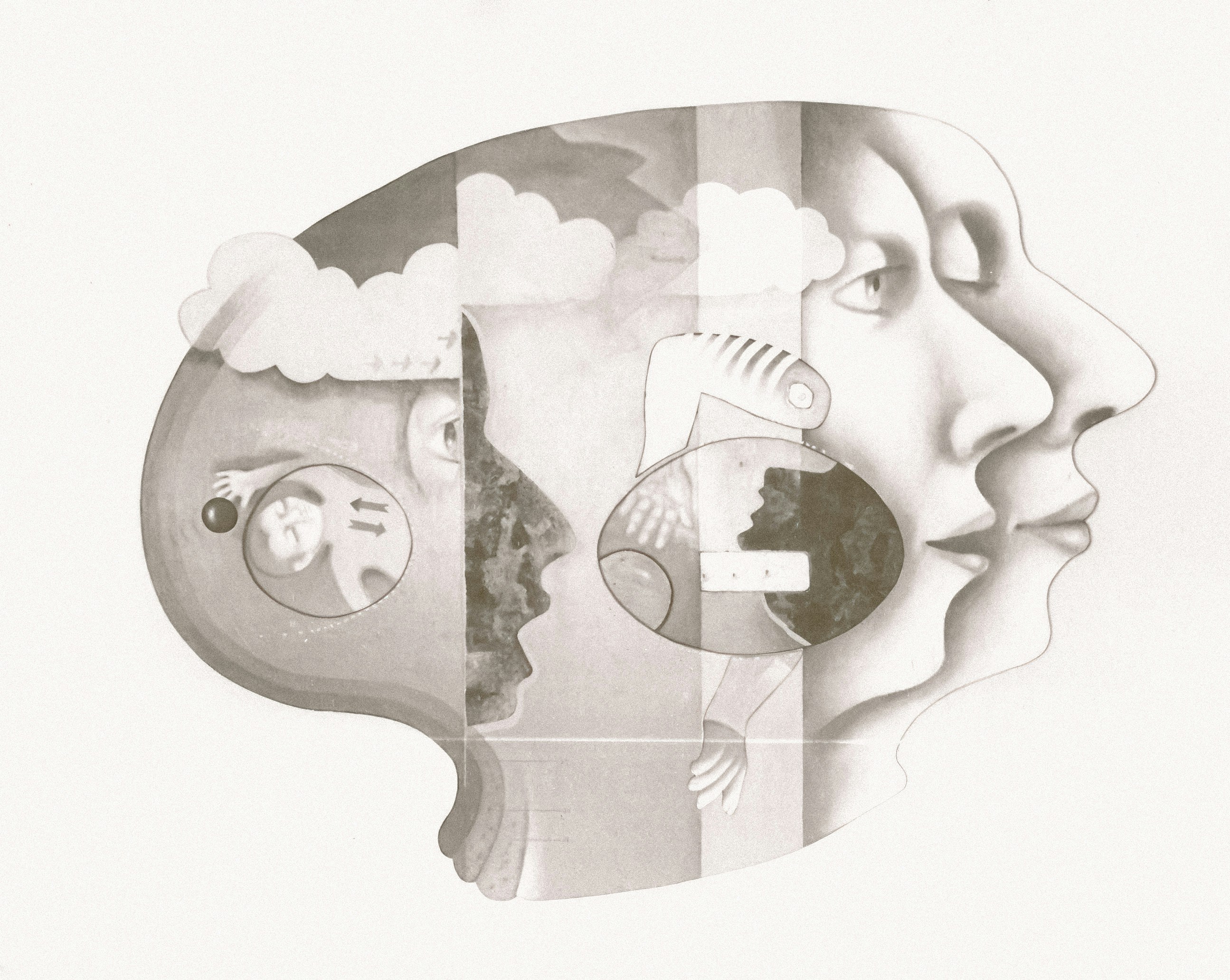Harnessing Biometric Authentication: Make Your Body the Key Today!
In the rapidly evolving landscape of digital identity management, biometric authentication stands out as a cutting-edge solution, enabling us to harness our unique biological traits to secure everything from smartphones to financial transactions. Imagine a world where your fingerprint, retina, or even your heartbeat becomes the key to your digital life—this is no longer a distant fantasy, but a vibrant reality that we’re already beginning to embrace.
The Rise of Biometric Authentication

With each passing day, our reliance on digital devices increases, creating an urgent need for effective security measures. Traditional methods, such as passwords and PINs, are not only prone to theft but also cumbersome for users. This is where biometric authentication shines. It leverages unique physical characteristics to enhance security and streamline access. According to a report by the International Data Corporation (IDC), the global biometrics market is expected to grow significantly, aiming for a value of over $38 billion by 2025. This incredible surge highlights the urgency and relevance of adopting biometric technologies as our primary mode of authentication.
Understanding Biometric Authentication Technology

Biometric authentication can be broadly divided into two categories: physiological and behavioral traits. Physiological traits include fingerprints, facial recognition, and iris scans, while behavioral traits encompass voice recognition, keystroke dynamics, and even gait analysis. Each of these elements adds a unique layer of security, ensuring that your identity cannot easily be replicated or stolen.
For instance, fingerprint scanning employs complex algorithms to create a template based on the unique pattern of ridges and valleys on your fingertip. Similarly, facial recognition technology maps facial features and compares them to stored images, ensuring the person attempting access matches the profile. Interestingly, these technologies are advancing at an astonishing rate, enabled by machine learning and artificial intelligence, making them increasingly reliable and efficient.
Advantages of Biometric Authentication

-
Enhanced Security: Biometric traits are inherently unique to each individual, making them far more secure than passwords, which can be guessed or stolen. The likelihood of two individuals having the same fingerprint or facial features is nearly nonexistent.
-
Convenience: Forgetting a password is an all-too-common experience. With biometric systems, you can simply unlock your device or authorize a transaction with a quick scan, making the process seamless and efficient.
-
Fraud Prevention: Biometric authentication significantly reduces instances of identity fraud. Since biometric traits cannot be shared or easily replicated, the risk of unauthorized access is substantially lowered.
-
Traceability: Many biometric systems log user activity, providing valuable insights and data that can be used for analysis and improved security protocols.
Real-Life Applications of Biometric Technologies

From airports to smartphones, biometric authentication is already embedded in our daily lives. For instance, major airlines are adopting biometric boarding processes, allowing travelers to bypass traditional checks. Europe's Schengen Zone airports are transitioning towards facial recognition technology, expediting the boarding process while enhancing security.
Moreover, companies like Apple, Samsung, and Google have integrated biometric systems into their smartphones. The fingerprint scanner, introduced in the iPhone 5S, revolutionized how we interact with our devices. It is now nearly mandatory for smartphones to feature fingerprint scanning or facial recognition, reflecting a shift toward this technology as a standard.
Additionally, ecommerce platforms are embedding biometric authentication to secure sensitive transactions, enhancing both the user experience and security by minimizing the risk of theft.
Ethical Considerations and Privacy Concerns

With the rise of biometric systems, ethical discussions and privacy implications are increasingly coming to the forefront. Questions arise about how biometric data is stored, who has access to it, and what measures are in place to protect such sensitive information.
For instance, a study by the National Institute of Standards and Technology (NIST) emphasizes the importance of securing biometric databases. If compromised, the consequences could be dire. Unlike passwords, biometric identifiers cannot be changed, leading to a permanent breach of identity.
Furthermore, the debate over informed consent is significant. Users must be fully aware of how their biometric data will be used, stored, and shared. Transparency is critical in maintaining trust between consumers and service providers.
The Future of Biometric Authentication

As technology progresses, we are poised to see even more innovative applications for biometric authentication. Researchers are exploring more advanced biometric features, including using vein patterns, scent, and even DNA as identification methods. These advancements may open up possibilities for even greater security.
Moreover, with the rise of the Internet of Things (IoT), wearable devices equipped with biometric sensors are likely to become commonplace. Imagine being able to unlock your smart home or start your car simply through your unique physiological characteristics.
The evolution of biometric authentication technologies will also coincide with the emergence of the metaverse. As digital identities become increasingly intertwined with our real lives, safeguarding these identities through biometric verification will be paramount.
Integrating Biometric Authentication with Other Security Measures

While biometric authentication provides robust security layers, combining it with other security measures can offer even better protection. Multi-factor authentication (MFA) enhances security by combining biometric identifiers with traditional methods, such as passwords or security tokens. This hybrid approach mitigates risks, ensuring that even if one form of security is compromised, the user remains protected.
For example, an online banking platform may require a fingerprint scan along with a one-time passcode sent to the user's mobile device. The combination of these measures creates a formidable barrier against unauthorized access while maintaining user convenience.
Getting Started with Biometric Authentication

To harness the full potential of biometric authentication, consider integrating it into your personal and professional life. Here are a few practical steps to get you started:
-
Assess Compatibility: Check if your devices support biometric features. Most modern smartphones and laptops come equipped with fingerprint readers or face recognition capabilities.
-
Enable Biometric Security: Navigate to your device settings and enable biometric security features. Follow the prompts to accurately capture your biometric data.
-
Stay Informed: Regularly update your devices and applications to ensure you benefit from the latest security protocols and avoid vulnerabilities.
-
Understand Privacy Options: Familiarize yourself with the privacy settings on the devices you are using. Adjust your privacy preferences to ensure your biometric data is handled securely.
-
Educate Yourself on Emerging Trends: Stay updated on the latest developments in biometric technologies and cybersecurity. Knowledge is a powerful tool in protecting your digital identity.
-
Adopt Multi-Factor Authentication: Whenever possible, utilize MFA for additional security layers. This approach combines various elements of authentication, offering a more robust defense against unauthorized access.
Next Steps to Embrace Biometric Authentication
In conclusion, biometric authentication presents an exciting opportunity to redefine cybersecurity and digital identity management. By embracing this technology, individuals and organizations can not only enhance security but simplify access to their digital lives. As we continue to forge ahead into a technology-driven future, it becomes increasingly important to leverage the uniqueness of our human biology—the very essence of who we are—as the key to protecting our digital identities.
For a deeper understanding of how technology is reshaping our lives, you may find it beneficial to check out related articles such as Protect Your Online Identity: 10 Essential Tips or The Hidden Costs of Convenience: Automation's Trade-offs.
In the words of famed computer scientist Bruce Schneier, “Security is a process, not a product.” Thus, as we step forward, let’s ensure our journey into the realm of biometric authentication builds a safer, more secure digital world for everyone.



